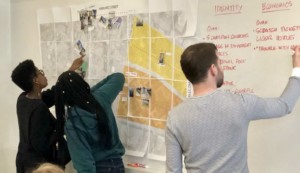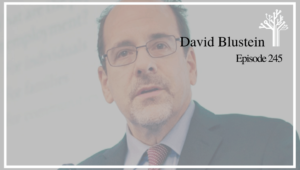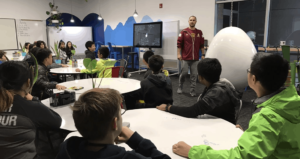The Innovation Inequity Paradox

By Matt Hiefield and Tom Vander Ark
Technology can fuel innovation, foster creativity, and create engaging learning environments. At its worst, though, poor educational technology and instruction can punish our poorest and most vulnerable students—especially students of color and students living in rural areas.
When amazing learning environments emerge in classrooms and in schools, they are often the result of individuals who are willing to reflect, collaborate, take calculated risks, and innovate. Failure and frustration are common in innovative environments, and this has been well documented (both historically and currently) in discussions of searching for knowledge and embracing a growth mindset.
When classrooms and projects are highlighted, we applaud creativity and student engagement. However, an interesting paradox often emerges: innovation creates inequity in education. Although this isn’t necessarily a permanent negative outcome, it does need to be addressed in a systematic manner at the school, district, and state levels.
School. In most schools, there are more than one teacher per grade or per subject area. Teachers teaching the same grade or course will often collaborate, but this is not always the case. The demands of the school day can make consistent collaboration difficult, and not all educators instruct in the same manner. Teachers can get stuck in doing things that they have done in the past. This is not to say that tried and true lessons of the past are ineffective. However, if students are not engaging and excited about learning, then perhaps something needs to change. When a teacher ventures out to try something innovative, the risks of failure are higher, but the opportunities for student engagement and ownership are also much higher.

In many schools, innovating can be a solitary affair, and this leads to a divergence in student experiences within the same grade level/class. This isn’t always a bad thing, of course, as teacher autonomy and choice can lead to richer learning experiences. But with that said, a great divergence in experiences leads to inequities that are hard to justify. For example, when a student with one teacher is tethered to their seat doing worksheets while a student in another teacher’s class is engaging with and owning their own learn, it is easy to guess which student enjoys school more. At the school level, not all teachers innovate at the same pace and differences between classrooms are to be expected and perhaps encouraged. Innovation, though, can lead to distinct inequities in student learning.
District. Within a district, some schools emerge as innovative learning environments while others cling to past practices. This happens for a variety of reasons. Sometimes, it is simply a matter of resources. Although the district may fund schools with an eye towards equity, wealthier schools through their parent organizations are often able to raise tens of thousands of dollars more than Title One schools. This leads to purchases of additional technology, opportunity, and supplies and creates a distinct advantage for those who are resource rich and are interested in innovation.
In addition, internet connectivity outside of the classroom is emerging as an issue with respect to innovation and opportunity. A quote from a 2016 report from the Dept. of Education’s Office of Educational Technology observes “that connectivity at home for students is an essential component of a 21st-century education—not something merely nice to have—if we are to avoid exacerbating pre-existing inequities in unconnected homes.”
As schools continue to digitize curriculum and new opportunities for innovation arise, students need home access. The advice of “go to Starbucks or McDonalds” or even “go to your local library in the evening” is not necessarily reasonable advice as it is a question of access as well as a question of safety. In Beaverton Schools, we are working to combat connectivity issues that can lead to inequities within schools:
- Extended Library Hours: One outcome to support students was to extend library hours. Although this is helpful, it doesn’t help students who work and/or take the bus home. This year, our district has extended activity buses so that students can access school wifi.
- WiFi access maps: Some of our schools in highly impacted areas contacted local businesses to see if they would be willing to allow students to use their wifi after school hours. This proactive approach helped build community support and engage others with our access challenges. To see a sample wifi map (in English and Spanish) click here.
- Sprint 1 Million Hotspot Grant: In the Spring of 2017, our Digital Equity Team applied for a Sprint 1 Million hotspot grant. We were fortunate enough to be chosen and this fall we deployed hotspots in all of our high schools. In planning to distribute the hotspots, we emphasized making the experience an affirming process for students. To view one of our rollouts, click here.
- Latino Tech Parent Nights: We host Latino parent technology nights to educate parents on how to support their students with technology. Many of these parents have not used a computer before, so educating them about digital citizenship, expectations, and parenting helps show them the value of being connected and of being ready for the future. Click here for an example.
- Kajeet Hotspot Project: To meet the needs at middle and elementary schools, we are piloting a Kajeet hotspot project at three of our highest needs schools. We are working closely to gather data on teaching and learning at these schools in order to inform future adoptions.
Internet access outside of the school day does not guarantee innovation. However, it provides incredible learning opportunities and chances for collaboration. A recent report from CoSN, (the Consortium for School Networking) shared this statistic from the Pew Research Center: “75% of school systems surveyed do not have any off-campus strategies for providing connectivity to students at home and after school.” This is a mind-boggling statistic. For districts who are looking to combat inequity and to cultivate opportunities for innovation for all students, home connectivity needs to be a part of the equation.
State. In most all states, districts fall on a broad continuum with respect to innovation. Some of this is budgetary, some of this due to staffing, and some due to school culture and expectations. Whatever the cause, traveling to schools around your state can lead to “aha” moments with respect to where innovation and engagement is interwoven into districts and where it is not. Initial indicators might be basic infrastructure and resources.
Inequities can also exist between districts in the same state. Although innovation can occur anywhere, a district in a funding crisis spends less on professional learning and class materials. Looking beyond funding, some districts strive to make innovation a part of their culture. It can often be found in district directives (a district that has innovation as a key value for its schools and community doesn’t guarantee innovation, but it certainly can facilitate it). Directives aside, the biggest way to see inequities between districts is to walk the halls and see what types of opportunities students are having on a daily basis. Are students getting a chance to create, to fail, to rethink, and to try again? Are teachers allowed to pursue innovative teaching strategies and do they have time to collaborate with other teachers? After considering budgets, district policies, and what is actually happening with students, it becomes pretty clear that some districts are providing fertile ground for innovation while others are plowing tired soil.
From Inequity to Invitation
Innovation, by its very nature of pushing the envelope to provide rich learning environments, leads to inequity. As some districts and schools work to reimagine learning, and while others cling to past practices, inequities naturally arise. Consequently, the education that a student receives at one school can be wildly different than a student at a school just a few miles away.
Innovation may begin as an individual initiative, but next generation learning models are a team sport. Developing and supporting individualized learning pathways requires collaboration around new tools and new learning models.
The more that educators can share in an invitational manner, the greater the chance will be that other teachers and districts will be willing to adapt.
 System heads should facilitate a vision of powerful learning across their district or networks. After significant engagement, smaller systems can adopt a unified learning model. Larger systems can allow schools to develop, adapt or adopt a learning model.
System heads should facilitate a vision of powerful learning across their district or networks. After significant engagement, smaller systems can adopt a unified learning model. Larger systems can allow schools to develop, adapt or adopt a learning model.
Kettle Moraine Superintendent, Pat DeKlotz, identifies and supports change leaders allowing them to move fast. The Wisconsin district created four charter schools inside existing schools to pilot personalized learning innovations. But like students, she knows her staff is not already and equipped to move at the same speed. While they want the best for every learner, they also recognize that staff progress at different rates and require different supports. With a shared vision for powerful learning.
Mesa County Colorado built a performance-based framework and invited schools that were ready to pilot the new competency system. They have the same expectation of mastery for every student but realize that teachers and schools move at different speeds.
The Imaginarium is Denver Public Schools’ incubator. Teacher leaders can apply and receive technical assistance to pilot a strategy or a school model. While Denver is supporting new school models and scaling successful networks, they close chronically failing schools in their commitment to ensure equitable access to good schools.
Albemarle County Public Schools has a well-developed strategy in place but (recently retired) superintendent Moran never let a plan block opportunity. “We pivot fast to stand up new idea,” explained Moran. When it comes to pilot projects, Pam suggests, “Aim small. Miss small.” She favors an iterative approach to innovation.
But, well aware that encouraging innovation–finding a way to say yes–can produce inequities across a school system, Moran made sure that each school had some change or innovation. “If not systemic, all kids won’t get the benefit,” said Moran. In addition to an innovation culture, Moran has created a culture that seeks equity.
Making innovation systemic means that change is not optional and that it won’t always be comfortable. “I’ve come to the conclusion after a lot of years that you can’t change the system without changing the system,” said Moran.
Next Steps
The new challenge of system leadership is to support innovation by:
- Building a coherent personalized learning system for students (or, in bigger systems, a portfolio of coherent systems).
- Building personalized learning pathways for teachers (as well as students) with incentives for teacher innovators and supports for teachers that need more time.
- Incentivizing teachers teams to develop and pilot new strategies and learning models.
And, simultaneously leading for equity by:
- Providing weighted funding so that school budgets reflect enrolled challenges.
- Managing a system of choices (including location, transportation, enrollment, funding, and facilities) so that access is equitable.
- Putting the personalized learning vision on a timeline so that a reliable promise can be made to the community that all means all.
Like Virginia, states can signal the importance of broader aims with a Profile of a Graduate. Like the Straight A Fund in Ohio, state leaders can promote innovation by requesting proposals. Like Idaho, states can authorize innovation schools with increased flexibility. However, like school and district innovations, open up inequities across states and must be accompanied by efforts to support struggling schools and end chronic failure.
With the recognition of broader aims and the development of new tools and learning models, getting the balance right between fostering innovation and fighting for equity may be the challenge of our time.
For more, see
- Empower Learners: 10 Lessons on Innovation Leadership (Kettle Moraine Public Schools, WI)
- Find a Way to Yes: 9 Leadership Lessons from Pam Moran (Albemarle County Public Schools, VA)
- Colorado’s District 51 On Building a Performance-Based Education System (Mesa County Public Schools, Grand Junction CO)
Matt Hiefield is a digital curriculum specialist for Beaverton School District with a passion for investigating digital equity issues. He serves as an ISTE Digital Equity PLN Leader and as a CoSN Digital Equity Advisory Council Member. Connect with Matt on Twitter: @MattHiefield
Stay in-the-know with all things edtech and innovations in learning by signing up to receive the weekly Smart Update. This post includes mentions of a Getting Smart partner. For a full list of partners, affiliate organizations and all other disclosures, please see our Partner page.








0 Comments
Leave a Comment
Your email address will not be published. All fields are required.